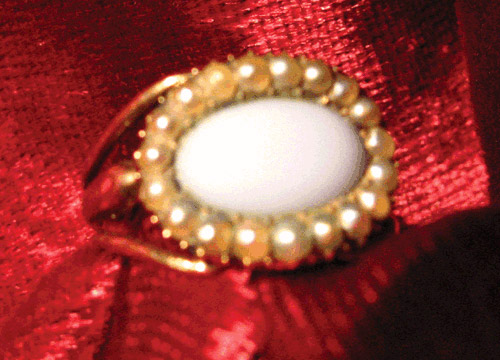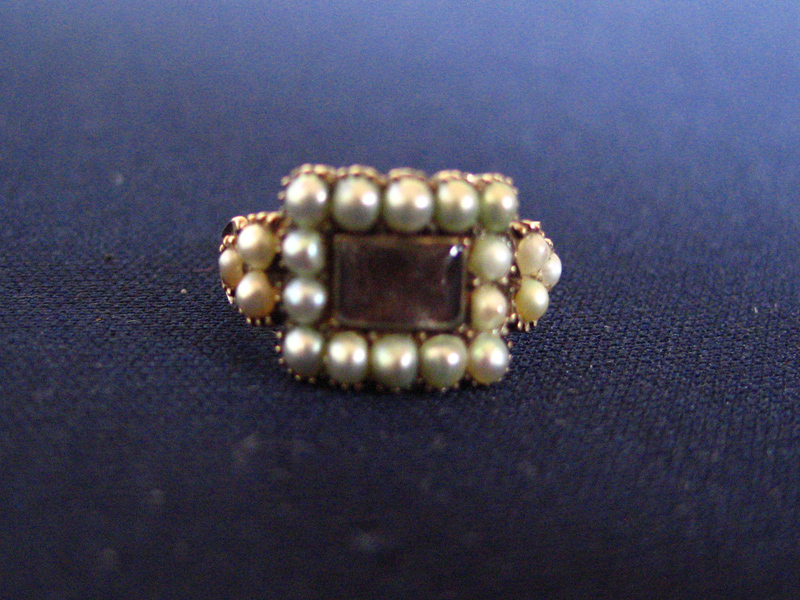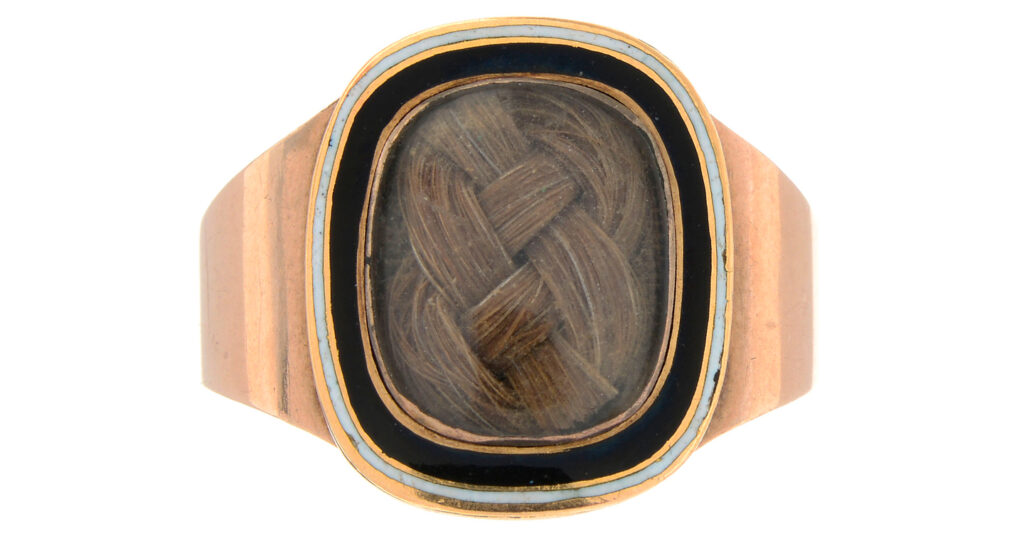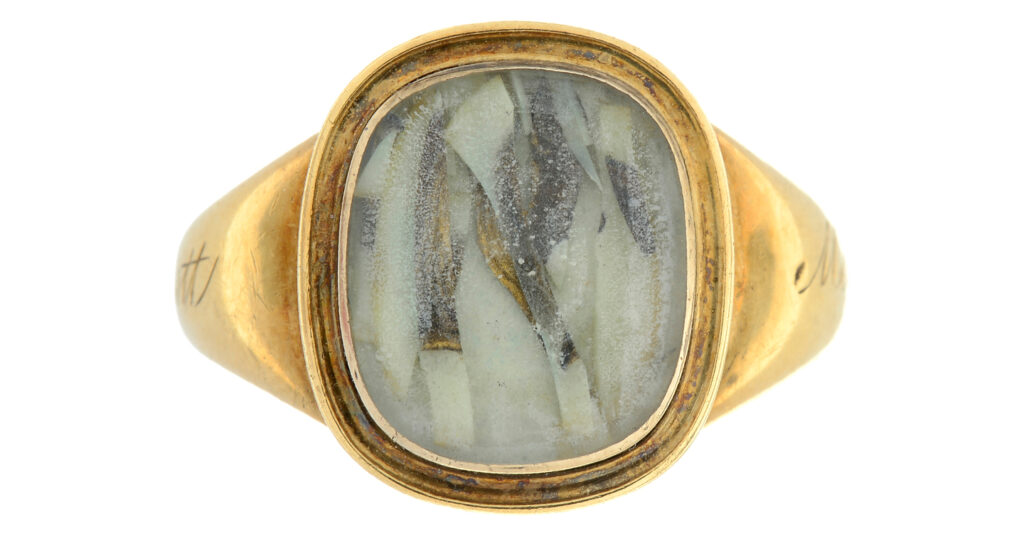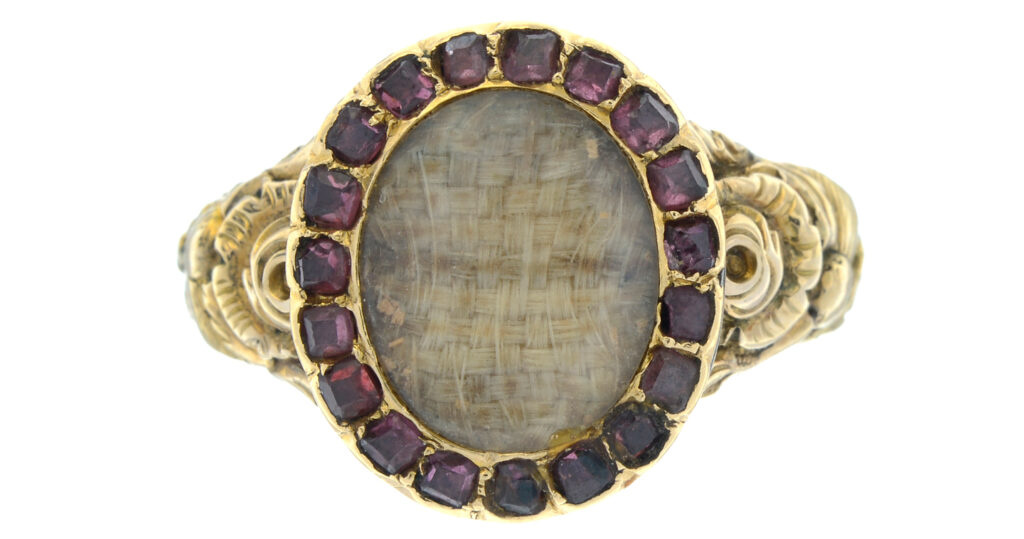Ring Design in the Early 19th Century: Oval and Rectangle
Following on from our previous look at the wonderful open-shanks of the early 19th century, we have this ring, with its chalcedony interior and pearl surround.
As mentioned in the previous article, the style of the shank disappeared within a period of twenty years and the bezels became rectangular, but the general style and construction remained the same. Compare that with the ring below:
And you can note the similarities. While this ring is more elaborate in its continuation of pearls along the shoulders, the general conceit of the ring is the same. Pearls, central area for hairwork or gem and dedication underneath.
This style remained popular until the mid-19th century and was used until the end of the 19th century in style, due to its ability to adapt and its sentimental simplicity. There was no need to change a style that was geared towards the personal sentiment of love, as the hairwork was placed in the centre and worn proudly outwards.
Do note that the use of other materials than hair in the dedication area of these pieces can often be later amendments. These rings are highly marketable when there is no clear indication of being for mourning or sentimentality (modern sellers often equate hair with death), so the hair and glass are easy to replace with a stone and when the surrounding pearls/turquoise/jet are still there, they are quite beautiful and command a good price.




